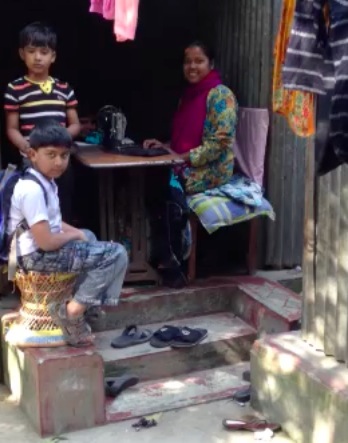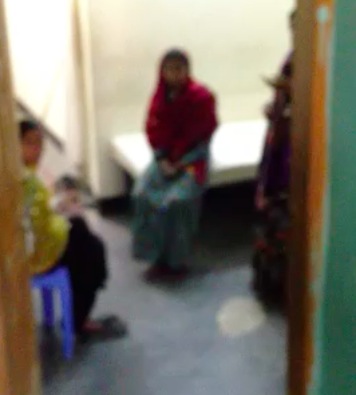Looking for BEST Treatment Options
By 2003, satisfied that the HEALS study was running smoothly and wouldnt require as much of their attention, Ahsan and Parvez began to look for opportunities to help study participants, not only answering scientific questions, but also helping in resolving the potential public health impact of the problem in Bangladesh, recalls Ahsan. We were looking at ways of countering the effects of arsenic poisoning in people with [pre-cancerous] skin lesions...who had already accumulated a critical amount of exposure. [23]

Ahsan and Parvez were aware of the common practice in Bangladesh of treating patients with antioxidants for various ailments. (Antioxidants are chemical compounds thought to protect cells from damage by unstable molecules, known as free radicals, which are released by oxidation.) The researchers also knew of several promising studies that suggested antioxidants might stop the progress of some arsenic-induced illnesses. But there had been no large-scale randomized trial of antioxidants effectiveness in combating arsenic poisoning. They decided to try a small-scale pilot project to see whether administration of two antioxidants, selenium and Vitamin E, might arrest or slow the progress of arsenicosis.
Pilot study . The researchers decided on a six-month, 121-person study, a two-by-two randomized, double-blind trial. In a two-by-two trial, a quarter of participants are given substance A, a quarter substance B, another quarter substances A plus B, and the final quarter a placebo. Participants are unaware of what theyre taking.
The pilot study showed that the antioxidants slightly lessened the severity of skin lesions. [24] It also demonstrated a suitable methodology for a larger trial. In 2004, Ahsan decided to apply to the National Cancer Institute for a grant to conduct a much larger cohort study. The NCI had recently funded an ongoing 35,000-person, North American trial of antioxidants ability to lower the risk of prostate cancer, and it made sense to try the same treatment on arsenic-related skin cancer. In 2005, Ahsan and his collaborators won $10 million for the first five years of a planned 10-year studythe Bangladesh Vitamin E and Selenium Trial (BEST). The local partner was the International Centre for Diarrheal Disease Research, Bangladesh (ICDDR,B), whose ability to recruit allowed the researchers to expand the trial to 7,000 subjects from an original 4,444. Each partner would enroll 3,500 participants.

Testing an intervention. If mitigation was important in HEALS, an observational study, it was much more so in a clinical trial like BEST, and the researchers felt an extra obligation. Recalls Ahsan: Because we are making them take vitamin E or selenium, which they would otherwise not have been taking, for 10 years, we must provide these participants arsenic free water. The design of the trial required that test subjects have access to drinking water with safe levels of arsenic, both for the sake of the scientific results and as a mitigation strategy. Drilling wells would be relatively expensive. The team looked for another route to safe water.
Dr. Habibul Ahsan explains the importance of providing test subjects with clean water.
Filters . In the summer of 2006, another possibility opened up. Ahsan had just recruited epidemiologist Dr. Mahfuz Rahman, who had worked for the ICDDR,B, to join the BEST project. Through a friend who worked for UNICEF, Rahman learned that the UN agency would be distributing free water filters in the region. Parvez recalls that, with surprising ease, the agency agreed to distribute its filters to BEST study participants:
It worked out well. We wanted to provide arsenic free water and they wanted a credible partner. We could also provide them with follow-up and feedback on the filters.
But winning funding and lining up the filters were only the first steps. The next was to recruit participants. That proved more time-consuming than anticipated. The criteria were: men and women between 25 and 65, not pregnant, with pre-malignant skin lesions. Importantly, they had to be willing to provide blood and urine samples. Field workers had believed that there were some 5,000 individuals afflicted with arsenicosis-related skin lesions among the HEALS cohort in Araihazar. As it turned out, there were only some 1,200. Apparently, villagers had been keen to enroll in BEST for the benefits, which included access to the health clinic, and may have overstated the incidence of symptoms.
The Columbia partner in BEST needed to find a total 3,500 participants. By 2006, they had lined up 870 in Araihazar, plus another 1,060 in neighboring Sonargaon. They needed another 1,500-plus. For advice on where to expand, the BEST team turned to its partner, ICDDR,B. BEST researchers also consulted with area non-governmental organizations (NGOs) and culled government health rolls. In early 2007, they added Laksam, a town of 60,000 (within an eponymous sub-district of half a million) some 60 miles southeast of Dhaka. Laksam had a significant incidence of arsenicosis.
In March 2007, Dr. Talat Haiderwho had already worked on BEST for a year in Araihazarwas made project director in Laksam. Together with two field supervisors and a research assistant, he moved to Laksam to begin recruitment. [25]
[23] Authors' phone interview with Habibul Ahsan on January 23, 2012. All further quotes from Ahsan, unless otherwise attributed, are from this interview.
[24] Verret et al, A Randomized, Double-Blind Placebo-Controlled Trial Evaluating the Effects of Vitamin E and Selenium on Arsenic-Induced Skin Lesions in Bangladesh, Journal of Occupational & Environmental Medicine , October 2005 - Volume 47 - Issue 10 - pp 1026-1035
[25] The two supervisors were Binoy Datta and Sanowar Hassen; the assistant was Tarun Kanti Barman.